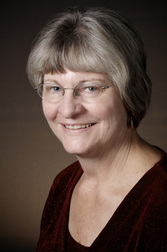
1. Where do your story ideas start? My “Dream” series started from a spark of family history—my dad telling me that my grandmother had ridden wild, bucking steers in rodeos during the 1920's. That stayed in the back of my mind until many years later, when I decided to return to my first love of writing—fiction. Thus, Cowgirl Dreams, Follow the Dream, and the new Dare to Dream (coming out in May) were born. Plus, a non-fiction book about the old-time cowgirls of Montana, Cowgirl Up! will also be published sometime this year. All that from one tiny bit of information!
2. What do you write first? (beginning, middle, end) I usually start at the beginning, probably a hold-over from my journalism days to come up with a lead and go from there.
3. Character development, do you do anything special? When I first started writing I received feedback that my characters were “flat”, and I struggled with that until I started taking classes and reading lots of “how-to” books and articles. Emotion and conflict are key—what is the character feeling when X happens? And there has to be lots of conflict and obstacles to overcome.
4. Where do you do your writing? All on my computer. Sometimes I’ll jot down ideas in a notebook as I’m sitting out in nature, being re-charged, but the crafting comes at the computer.
5. A story usually springs from an idea, a character or a scene. Once that idea is planted - how do you make it grow? It’s always good to ask “What if?” You have a character who cares about something or someone, what if something happens to threaten that something or someone? How does the character react and how does he/she overcome whatever obstacles you throw at him/her? I do lots of research too, since my books are historical fiction—events that really happened can help give ideas to develop your own storyline.
6. Do you write in Chronological order or do you bounce around within the manuscript? I usually write in chronological order, but I made a discovery that helps if I get stuck in one place. Perhaps I know what I want to write at some point in the future, but don’t know how to get from point A to point B. If I go ahead and write that scene in the future (even the ending sometimes!) that will often give me ideas on how to bridge that gap.
 RSS Feed
RSS Feed